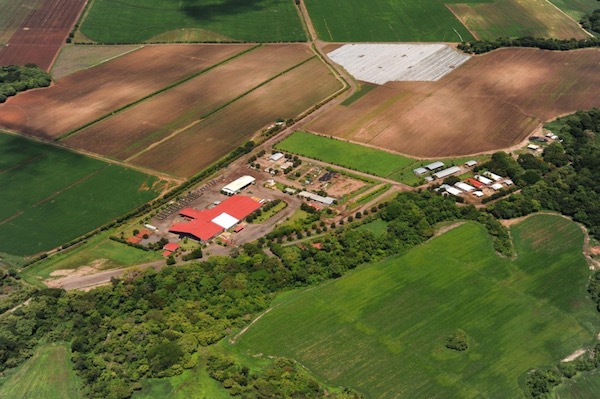[ad_1]

As technology continues to advance, satellite imagery becomes increasingly available to a wide variety of industries. Satellite imagery has not always been publicly available to everyone. Most of its use was limited to military and government operations. It was only a few years ago that it became available to the public. Now, it is no longer a question of its availability. It is a problem of choosing the right satellite imagery service. With the right information on where to look, anyone can go online and find hi-res imagery for business needs. By now, we are already aware of numerous benefits of satellite imagery in precision agriculture, real estate, contractors, etc., especially when it has the potential to cut costs and help in important business decisions.
So, in this article, we will give you some tips on how to select satellite imagery for your business.
Choose A Provider with a Good Track Record
The online reputation of any business is a significant indicator of its credibility. That is why before choosing a provider, one of the most important factors that should influence your decision is its reputation. You should check what other people and companies are saying about the company. If the provider has quality images and does a good job, you will find mostly positive reviews with some spotted negative ones, mostly from competitors. However, if you find more negative reviews, that should be a red light indicating poor services.
Quality of images
Looking at the business side of things, satellite image quality should be at the top of the list when choosing your provider. There are many factors that may affect image quality. However, spatial resolution is the most crucial. You also need to check the quality of data that the satellite can transmit. Most often, you will get good-quality images when more satellites are tracked.
Look for a provider that offers high-resolution pictures in lots of different formats. For example, LandViewer from EOSDA provides high and medium resolution images from satellites such as KOMPSAT, Gaofen, Landsat, and CBERS-4. Using this tool, clients can get and analyze satellite pictures of their area of interest. This tool is advantageous because it provides images from multiple satellites. So, split-view mode and time series analysis to compare images of the same area captured by different satellites on different dates and times. The results will be shown in a time-lapse animation format. Also, you can use more than ten different indices to search, view, and analyze images, which will give you better insights to solve real business problems.
Compare Prices and Services
Before settling for any specific provider, you need to first compare the prices of its services with the competitors. You should also look at the perks that the company offers. For example, with LandViewer, users can get up to 10 free medium-resolution images daily. This can help you significantly cut costs, especially if you are tight on budget. So, you should weigh the prices and the services provided.
Directions for the use of commercial satellite imagery
The applications of commercial satellite imagery cut across many different industries. With the presence of complex technologies like machine learning and AI analytics, businesses can get the right data to predict the future. Let’s look at some of the industries that are benefiting from satellite imagery:
Agriculture
Agriculture is the industry that feeds the world, and it needs all the upgrades to continue doing so. To produce more food and limit the loss of crops, farmers need to turn to satellite technology. It is able to provide farm owners with the necessary information on the health of their crops, animals, soil, and even weather forecasts. Farmers can also get historical data on their fields to see how it has changed over the years.
One of the biggest advantages that satellite technology has brought to agriculture is the possibility of sustainable and precision farming. With the data collected from sensors and analyzed using machine learning, farmers can know the state of their crops and animals in real-time. It gives them the right knowledge on when to plant, irrigate, fertilize, and plant. This severely limits the damage farming does to the environment.
Shipping
Logistics is one of the industries that have greatly benefited from satellite technology. With the use of satellites images and telematics devices, experts are able to plan the most cost-efficient route for shipping. This process also significantly reduces carbon emissions by ships because they will travel shorter distances. Also, satellite technology can help stakeholders have real-time monitoring of their fleet.
Emergency response
In cases of natural disasters, satellite images have been the go-to tools for accessing the damage that has been done. Experts can quickly identify the areas that have been affected and plan how they will intervene. This will increase the speed and efficiency of how the intervention is done, leading to a decrease in fatalities.
Satellite images can also be used to forecast weather conditions. This is very crucial in saving lives and property because people can evacuate on time.
Mining
Satellite imaging provides geologists and field crews with the layout, landscape, and location of surrounding structures. This is very helpful for them to be able to maneuver their way through inhabited and unexplored areas.
With multispectral imaging, experts can differentiate between soils, rocks, and vegetation. They can use the images to know the types of soil that are present in any particular area.
Satellite data has become available for everyone worldwide. With the ease of access and low costs, businesses should take advantage of it to enhance their decision-making process.
[ad_2]
Source link






